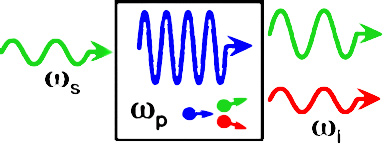The goals of this program are to establish that manifestly quantum effects occur in biology, and to exploit those quantum effects in order to demonstrate the feasibility of biomimetic quantum sensors. Because the most advanced tools for creating, manipulating, and measuring quantum states utilize photonic states and systems, this project focuses on identifying and exploiting manifestly quantum effects in photo-reactive biological systems. Few—if any—photo-reactive biological systems have had as fundamental of an impact on the field and practice of biology as fluorescent proteins.
The fluorescent protein revolution began in 1994 when the original green fluorescent protein (GFP), extracted from the jellyfish Aequorea victoria, was expressed in the nematode C. Elegans and used to image its neurons. When GFP is illuminated with blue light, it emits—with ∼ 80% quantum efficiency—green fluorescence. In addition to its brightness, GFP functions at room-temperature in living tissues, can be expressed by a wide variety of organisms, and maintains fluorescence after being fused to other proteins. As a result, GFP and over 20 naturally occuring and artificially engineered fluorescent proteins (FPs) have been used for studies of intracellular dynamics, reporter gene technology, drug discovery, and super-resolution microscopy. In recognition of the profound impact of FP technology, the 2008 Nobel Prize in Chemistry was awarded to Chalfie, Shimomura, and Tsien for the discovery and use of GFP.
Although enormous effort has been expended to discover new FP-variants, protein-fusion techniques, and related imaging applications, the question of manifestly quantum effects in fluorescent proteins has been largely ignored. Because FPs strongly couple to incident light, even at the single-photon level, it is feasible that techniques for creating, manipulating, and measuring photonic quantum states developed for use in quantum communications could be directly applied to many FP species. We propose to apply five techniques for identifying coherence, superposition, and entanglement in photonic systems to multiple species of fluorescent proteins. If successful, it is likely that the exploitation of coherent FP dynamics would enable FP-based biomimetic quantum sensors, including room-temperature efficient infra-red photo-detectors, new types of photo-responsive paint / lithographic spin-resist, and super-resolved quantum-biological imaging systems.

